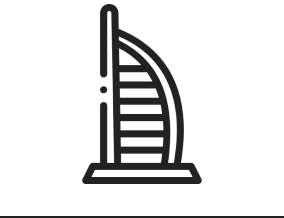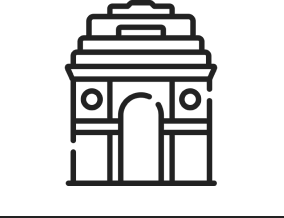Effective demand planning is the backbone of a resilient supply chain. Accurate forecasting helps businesses optimize inventory, reduce costs, and respond swiftly to changing market conditions.
By leveraging predictive analytics, scenario planning, and real-time insights, companies can anticipate customer needs, minimize waste, and maintain smooth operations.
Implementing advanced forecasting strategies transforms supply chains into proactive, data-driven systems that stay ahead of demand fluctuations.
Why Accurate Demand Planning Matters
Demand planning is more than just predicting sales—it’s about aligning production, inventory, and logistics with actual market demand. Accurate demand forecasting helps businesses:
- Minimize inventory holding costs
- Improve customer service levels
- Optimize production schedules
- Reduce waste and inefficiencies
However, achieving precise forecasts requires robust solutions capable of analyzing historical data, market trends, and external factors like seasonality or economic shifts.
Top Supply Chain Forecasting Solutions
Several tools and software platforms have emerged to help businesses forecast demand more accurately. Here are some of the top solutions:
- BOARD
- An integrated decision intelligence platform that combines business intelligence (BI), performance management, and predictive analytics.
- Supports scenario planning (“what-if” analysis) to simulate supply chain disruptions or changing demand.
- Provides forecasting models based on historical sales, inventory, and external data.
- Real-time, interactive dashboards for inventory visibility, sales trends, and demand-supply alignment.
- Usable by business users with minimal IT support, enabling collaborative planning across teams.
- An integrated decision intelligence platform that combines business intelligence (BI), performance management, and predictive analytics.
- SAP Integrated Business Planning (IBP)
- An enterprise-grade tool that brings together demand planning, inventory optimization, and supply planning.
- Uses demand sensing to capture short-term changes in demand (e.g., promotions, market shifts).
- Advanced statistical forecasting algorithms to produce baseline demand forecasts.
- Built-in Sales & Operations Planning (S&OP) capabilities to align demand with supply and financial goals.
- Seamless integration with SAP ERP, making it ideal for companies already in the SAP ecosystem.
- An enterprise-grade tool that brings together demand planning, inventory optimization, and supply planning.
- Kinaxis RapidResponse
- Known for its real-time, concurrent planning capabilities — planners can run live simulations and update plans dynamically.
- Designed for agility: it helps companies respond quickly to supply chain disruptions.
- Offers strong cross-functional collaboration: integrates supply, demand, finance, and operations.
- Its in-memory architecture ensures that planning updates and “what-if” simulations are fast and scalable.
- Known for its real-time, concurrent planning capabilities — planners can run live simulations and update plans dynamically.
- o9 Solutions
- Provides a “digital brain” for supply chain planning, using graph-based data models and advanced AI/ML.
- AI-Driven Forecasting: Machine learning analyzes patterns across vast datasets to predict demand.
- Touchless Planning: Automates many routine planning tasks, freeing planners to focus on strategy.
- Scenario Simulation: Enables “what-if” analysis to test possible future supply or demand disruptions.
- Explainable Forecasts: Helps users understand why a particular forecast was generated, increasing trust in the model.
- Provides a “digital brain” for supply chain planning, using graph-based data models and advanced AI/ML.
- Anaplan (ANA)
- Demand Planning Application: Anaplan’s purpose-built app supports collaborative, AI-driven demand forecasting.
- AI/ML Forecasting: Uses machine learning and statistical models to generate and continuously refine forecasts.
- Statistical Forecasting: Supports 30+ statistical algorithms, allowing planners to choose the best-fit model for different products or demand patterns.
- Scenario Planning: Built-in “what-if” scenario tools let you simulate changes in demand, supply or inventory.
- Connected Planning: Integrates demand planning with supply planning, S&OP (Sales & Operations Planning), capacity planning, and inventory via a unified, cloud-native platform.
- Explainability & Transparency: Forecast models, outliers, and forecast drivers are clearly visible in dashboards, improving planner trust and accuracy.
- Demand Planning Application: Anaplan’s purpose-built app supports collaborative, AI-driven demand forecasting.
How to Choose the Right Tool
Here are some key factors to consider when picking a demand planning/ forecasting solution:
- Integration with Existing Systems: If you already use SAP, IBP might be a natural fit. For a more flexible or best-of-breed approach, BOARD or Anaplan could work well.
- Forecasting Maturity: If your team wants advanced statistical or AI models, prioritize tools like Anaplan or o9. If you need strong scenario planning, consider BOARD or Kinaxis.
- User Adoption: Tools with intuitive dashboards and less reliance on IT (like Anaplan and BOARD) often get faster adoption.
- Speed vs Complexity: Real-time planning tools (Kinaxis) offer fast reaction but may require more planning discipline.
- Budget & ROI: Consider not just licensing cost but also implementation, training, and potential savings from better demand planning.
Conclusion
Accurate demand planning is no longer optional—it’s critical for maintaining a competitive edge. Investing in advanced supply chain forecasting solutions like BOARD enables businesses to make smarter, data-driven decisions, reduce costs, and improve customer satisfaction.
By implementing the right forecasting tool, companies can stay ahead of market trends, optimize inventory levels, and build a more resilient supply chain.

Vivek Bisht
Sr. Content Writer






